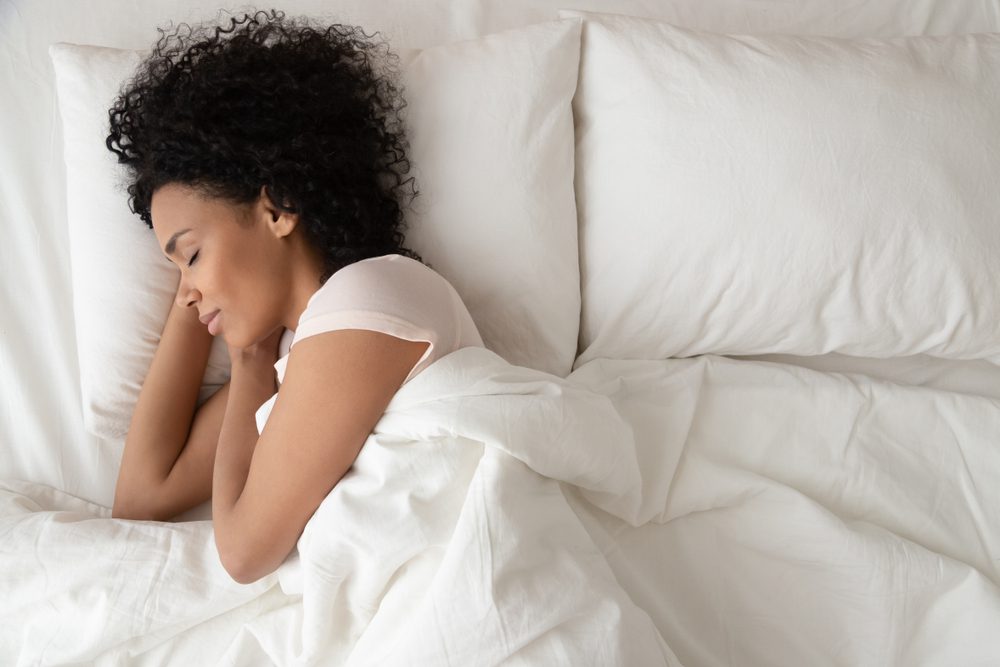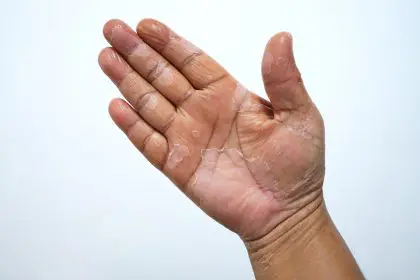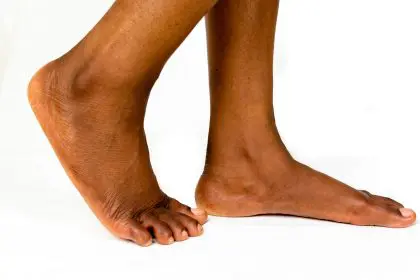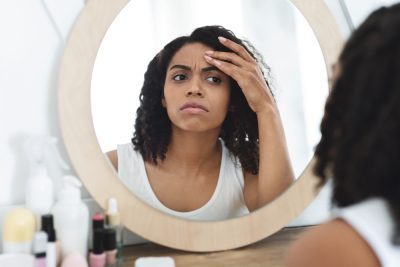That pillow might be comfortable, but it could be accelerating facial aging in ways you never expected.
While skincare routines focus on serums, creams, and treatments, one of the most significant factors affecting facial aging happens during the hours you’re completely unaware – your sleep position. Those seven to nine hours spent in the same position night after night gradually reshape facial tissues and create sleep lines that eventually become permanent fixtures. Understanding this often-overlooked connection provides a valuable opportunity to preserve youthful skin with simple adjustments to nighttime habits.
The face contains delicate tissues that respond to consistent pressure and compression over time. Just as orthodontic braces slowly reposition teeth through gentle but persistent pressure, sleep positions create predictable patterns of facial distortion when maintained over months and years. The mechanical forces applied during sleep affect everything from skin elasticity to facial fat distribution, with results that become increasingly visible with age.
How mechanical compression accelerates skin aging
The skin relies on two crucial proteins for maintaining youthful appearance and resiliency – collagen and elastin. These structural components provide the scaffolding that keeps skin smooth, firm, and able to bounce back after being stretched or compressed. When facial skin experiences prolonged compression against pillows during sleep, these proteins undergo mechanical stress that accelerates their breakdown.
This mechanical stress triggers a cascade of events within skin tissues. The compression temporarily restricts blood flow and lymphatic drainage, reducing oxygen and nutrient delivery while slowing the removal of cellular waste products. Over time, this contributes to collagen and elastin degradation, particularly when the same facial areas experience nightly compression in side or stomach sleepers.
Research demonstrates that mechanical forces on the skin activate pathways that increase enzyme activity responsible for breaking down collagen. These enzymes, called matrix metalloproteinases (MMPs), become more active in areas experiencing regular compression, contributing to accelerated collagen loss in specific facial regions depending on sleep position.
The visible results appear as sleep wrinkles – distinct from expression lines that form from repeated facial movements. Sleep wrinkles run in predictable patterns based on how facial tissues compress against bedding, creating characteristic vertical lines on cheeks, diagonal creases from the corner of the eyes, and flattening of facial contours over time.
The sleep position aging map: Where wrinkles form by position
Each sleep position creates a predictable pattern of facial aging, affecting different areas depending on how the face contacts sleeping surfaces. Understanding these patterns helps identify potential trouble spots based on preferred sleep positions.
Side sleeping effects: Side sleeping, the most common position, creates the most dramatic facial compression. When sleeping with the face pressed against a pillow, the weight of the head (approximately 10-11 pounds) concentrates pressure on whichever side contacts the pillow. This consistent pressure leads to:
Vertical cheek wrinkles that run perpendicular to smile lines Deeper nasolabial folds on the compressed side Diagonal lines extending from the corner of the eye toward the hairline A flattened appearance on the compressed cheek over time Potential jawline asymmetry from uneven pressure
For those who consistently favor one side, these effects become notably more pronounced on the preferred side, leading to facial asymmetry that becomes increasingly apparent with age. Side sleeping effects typically manifest first in the thinner skin around the eyes and gradually progress to affect cheeks and jawline contours.
Stomach sleeping consequences: Stomach sleeping creates perhaps the most problematic position for facial aging. With the face directly pressed into the pillow, this position creates:
Forehead compression and horizontal lines across the brow Flattening of the midface over time Pronounced crow’s feet and under-eye puffiness Accelerated development of sleep wrinkles around the mouth and chin Increased likelihood of skin stretching along the jawline
Stomach sleepers essentially apply direct, prolonged pressure to the entire facial structure, affecting nearly all regions in a single night. This position also frequently leads to neck strain that can contribute to tech neck lines and accelerated aging of the delicate neck skin.
Back sleeping benefits: Back sleeping represents the ideal position for facial preservation, eliminating direct compression against pillows. This position supports:
Even distribution of facial tissues without gravitational pulling Reduced formation of sleep-induced wrinkles and creases Preserved facial symmetry and contours Better lymphatic drainage, reducing morning puffiness Minimized risk of developing deep sleep wrinkles over time
While back sleeping presents challenges for some, including those with sleep apnea or acid reflux, the facial benefits make it worth pursuing for those concerned about preserving youthful facial appearance.
The facial tissue memory effect
Facial tissues possess a remarkable property that contributes significantly to sleep-induced aging – tissue memory. In younger skin, compressed facial tissues quickly spring back to their original position upon waking. The abundant collagen and elastin fibers in youthful skin provide structural memory that resists permanent deformation, allowing temporary sleep lines to fade quickly.
However, as we age, this recovery ability diminishes steadily. By the 30s and 40s, facial tissues begin retaining the memory of sleep positions for progressively longer periods. What once disappeared within minutes after waking may linger for hours. By the 50s and beyond, these temporary compressions increasingly become permanent fixtures as tissue memory fails to reset completely.
The tissue memory effect explains why sleep position impacts become dramatically more visible with age. While a 25-year-old side sleeper might see temporary morning creases that disappear quickly, the same sleep position in someone 50+ contributes to lasting facial changes that remain visible throughout the day.
This cumulative effect resembles folding paper – a single fold disappears easily, but repeated folding in the same location creates permanent creases. Similarly, thousands of nights in the same position gradually etch permanent lines into facial tissues that even advanced cosmetic treatments struggle to reverse completely.
The pillow materials connection to facial aging
Beyond position alone, pillow materials significantly influence how sleep affects facial aging. Different pillow surfaces create varying levels of friction, compression, and moisture absorption – all factors that impact skin during sleep.
Cotton pillowcases, while comfortable and breathable, create significant friction against facial skin. This friction prevents natural movement during sleep, essentially anchoring the face in place and concentrating pressure on specific areas. The resulting shear forces contribute to collagen breakdown and development of sleep wrinkles over time.
Traditional memory foam pillows, designed to cradle the head, often create problematic facial compression. The material’s tendency to form around facial contours means more skin surface area experiences pressure throughout the night. While comfortable for sleep quality, this full-contact effect accelerates sleep line formation.
Moisture retention represents another critical factor. Materials that trap moisture against the skin create a microenvironment that decreases skin barrier function over time. This moisture trapping increases transepidermal water loss after rising, contributing to dehydration and diminished skin resilience against mechanical stress.
Temperature regulation also plays a crucial role in how pillows affect facial aging. Materials that retain heat increase local skin temperature, accelerating cellular metabolic rates. This thermal effect can increase free radical production and enhance enzymatic activity that breaks down collagen during prolonged contact, effectively speeding the aging process.
The lymphatic drainage disruption
Facial aesthetics rely heavily on proper lymphatic drainage – the system responsible for removing excess fluid and waste products from tissues. During sleep, position significantly impacts how effectively this system functions, with direct consequences for facial appearance both immediately and long-term.
Side and stomach sleeping positions compress lymphatic channels, particularly around the eyes and cheeks, restricting normal fluid movement. This compression leads to fluid accumulation in compressed tissues, manifesting as morning puffiness and under-eye bags that become increasingly persistent with age.
Beyond temporary morning puffiness, chronic lymphatic disruption contributes to more concerning long-term effects. Prolonged fluid retention in tissues accelerates skin sagging by stretching elastic fibers and contributing to the gravitational pull that leads to jowls and dropping facial contours.
Those who sleep predominantly on one side typically notice asymmetric morning swelling, with the compression side showing more pronounced puffiness upon waking. Over years, this repeated cycle of compression and swelling creates permanent volume differences between facial sides, contributing to overall facial asymmetry.
Back sleeping maintains open lymphatic channels, allowing proper fluid circulation throughout the night. This position enables natural nighttime detoxification processes to function optimally, contributing to improved morning appearance and preservation of facial contours long-term.
The overnight skin care product displacement
Nighttime represents peak opportunity for skin regeneration, with cellular repair processes and product absorption maximized during sleep hours. However, sleep position directly impacts how effectively expensive nighttime products perform on the skin through displacement and absorption interference.
Side and stomach sleepers experience significant product transfer from face to pillowcase, with studies suggesting up to 70% of applied products may be removed through fabric contact. This displacement creates uneven treatment across the face, with compressed areas receiving minimal product benefits while uncompressed regions maintain full coverage.
The massage effect of face-against-pillow movement also disrupts product penetration, potentially pushing formulations into unexpected skin layers or moving treatments away from their targeted application areas. This displacement explains why many people see uneven results from overnight treatments despite consistent application.
Back sleeping preserves product placement and maximizes absorption time without interference, essentially extending the effective working period of nighttime treatments. This position advantage particularly benefits active ingredients requiring prolonged skin contact, including retinols, peptides, and growth factors that depend on extended skin contact for optimal results.
For those committed to side or stomach sleeping, product formulation becomes especially important. Faster-absorbing serum formulations and technologies that enhance skin adhesion help minimize displacement effects, while traditional creams and oils remain particularly vulnerable to pillow transfer regardless of pillowcase material.
The skin breathing disruption effect
While skin doesn’t literally “breathe” in the respiratory sense, it does undergo vital gas exchange processes that become compromised during prolonged compression. This disruption affects cellular metabolism and contributes to accelerated aging in compressed facial regions during sleep.
Oxygen availability at the skin surface diminishes significantly when pressed against pillows for extended periods. This localized hypoxia (reduced oxygen) triggers stress responses in skin cells, potentially increasing inflammatory markers and free radical production in affected areas.
Carbon dioxide concentration simultaneously increases in compressed skin regions, altering the local pH balance that normally helps maintain skin barrier function. This pH disruption can compromise the acid mantle, the skin’s natural protective barrier, making compressed areas more vulnerable to irritation and environmental damage during waking hours.
The gas exchange disruption affects not only skin cells but also the microbiome – the collection of beneficial bacteria that inhabit skin surfaces. Altered oxygen and carbon dioxide levels potentially disrupt this delicate microbial balance, contributing to skin dysbiosis that manifests as increased sensitivity, redness, or inflammatory responses over time.
The age-related sleep position considerations
Sleep position impact varies dramatically depending on age, with certain life stages showing heightened vulnerability to position-related aging effects. Understanding these age-specific concerns helps prioritize potential adjustments based on individual aging patterns.
In the 20s, collagen production remains robust, with the skin’s ability to recover from sleep compression nearly complete each morning. However, this decade represents an opportunity for prevention, as sleep habits established during these years often persist throughout life. Adopting back sleeping early provides maximum long-term facial preservation benefits.
The 30s mark a transition period where sleep lines begin lingering progressively longer after waking. Morning pillow creases that previously disappeared within minutes may now persist for an hour or more, signaling decreased tissue resilience. This decade represents the critical window where sleep position modifications deliver significant preventative benefits before permanent changes set in.
By the 40s and 50s, sleep position effects accelerate dramatically as collagen and elastin production decline significantly. Skin recovery becomes increasingly compromised, with sleep lines potentially lasting throughout the day. During these decades, positional effects compound with natural volume loss, creating more pronounced asymmetry and contour changes based on preferred sleep positions.
For those in their 60s and beyond, addressing sleep position becomes less about prevention and more about minimizing additional compression damage to already compromised facial tissues. While established sleep lines may not reverse completely, position modifications still deliver meaningful benefits by preventing further progression and supporting skin’s limited recovery capacity.
Practical solutions for sleep position aging
Addressing sleep position effects on facial aging requires practical approaches that balance facial preservation with sleep quality. Rather than sacrificing comfort entirely, implementing targeted strategies helps minimize position-related aging while maintaining restful sleep.
Training for back sleeping: Transitioning to back sleeping represents the ideal solution but requires gradual adaptation for natural side or stomach sleepers. Practical approaches include:
Using specialized pillows with cervical support that cradle the neck while discouraging rolling Placing small pillows or rolled towels alongside the body to prevent unconscious turning Starting each night on the back, even if position changes occur naturally during sleep Creating a slight incline from shoulders to head that discourages rolling while supporting proper spinal alignment Practicing daytime relaxation techniques in the back position to build physical memory
Even partial-night back sleeping provides benefits, as facial tissues experience less cumulative compression over time. For those unable to maintain this position all night, starting on the back reduces total compression hours significantly.
Side sleeping modifications: For committed side sleepers, strategic modifications minimize facial compression effects:
Using silk or satin pillowcases that allow facial gliding rather than gripping the skin Selecting pillows with cutout sections that reduce direct facial contact Adopting specialized side-sleeper pillows that position the head slightly elevated from the mattress Training to sleep with the edge of the face, rather than full cheek, contacting the pillow Alternating sides regularly to prevent asymmetric aging patterns
These adaptations won’t eliminate side-sleeping effects entirely but significantly reduce mechanical stress on facial tissues compared to traditional side-sleeping arrangements.
Supportive skincare strategies: Complementing position modifications with targeted skincare approaches provides additional protection:
Applying firming peptide serums before sleep to increase skin resilience against compression Using overnight retinol treatments to accelerate collagen production and counteract position-related loss Incorporating facial massage techniques upon waking to restore circulation and reduce lingering sleep lines Applying facial oils strategically on compression-prone areas to reduce friction against pillowcases Considering medical-grade silicone patches for high-risk wrinkle zones during sleep
These skincare approaches work synergistically with position modifications to maintain facial tissue integrity despite mechanical stresses during sleep.
Sleep wrinkle prevention technology: Emerging technologies specifically address sleep-induced aging through innovative approaches:
Specialized pillows with pressure-redistribution materials that minimize focal compression points Multi-positional systems that support the head while creating space for facial tissues Fabric technologies that reduce friction coefficients while maintaining comfort Memory foam innovations with cutout sections that accommodate facial contours without compression Adjustable firmness systems that provide neck support while minimizing facial contact pressure
These technological solutions continue evolving, offering increasingly sophisticated options for those seeking to preserve facial youthfulness without sacrificing sleep quality.
The face aging prevention opportunity
Understanding sleep position effects on facial aging presents a valuable opportunity for prevention that requires no expensive products or invasive procedures. Simply modifying how we position ourselves during those crucial eight hours each night potentially delivers more significant anti-aging benefits than many costly treatments.
The cumulative nature of sleep position effects means that even small adjustments, maintained consistently, yield substantial results over time. Much like compound interest, the preventative benefits accumulate night after night, eventually creating visible differences in how facial aging progresses compared to those maintaining compression-heavy sleep positions.
For those already noticing sleep-related facial changes, position modifications won’t reverse existing damage but effectively prevent further progression. This stabilization, combined with appropriate skincare and occasional professional treatments, often delivers more natural-looking improvements than addressing the symptoms through invasive procedures alone.
Perhaps most importantly, sleep position awareness empowers individuals with direct control over a significant aging factor that operates silently but consistently throughout life. Unlike genetic factors or environmental damage that may feel beyond control, sleep position represents a modifiable choice available to everyone regardless of age, gender, or skin type.
By recognizing how nightly habits literally shape our faces over decades, we gain valuable perspective on facial aging as the cumulative result of thousands of nights spent in positions that either preserve or compromise facial tissues. This understanding transforms sleep from a passive restorative period into an active opportunity for facial preservation that works quietly but effectively night after night.















